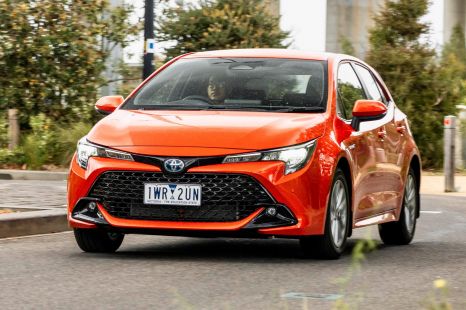

Max Davies
2025 Toyota Corolla SX review
6 Days Ago
The Gladiator Rubicon is the ultimate Jeep ute with off-road gear aplenty. It has all the pros and cons of a Wrangler, just with a big tray.
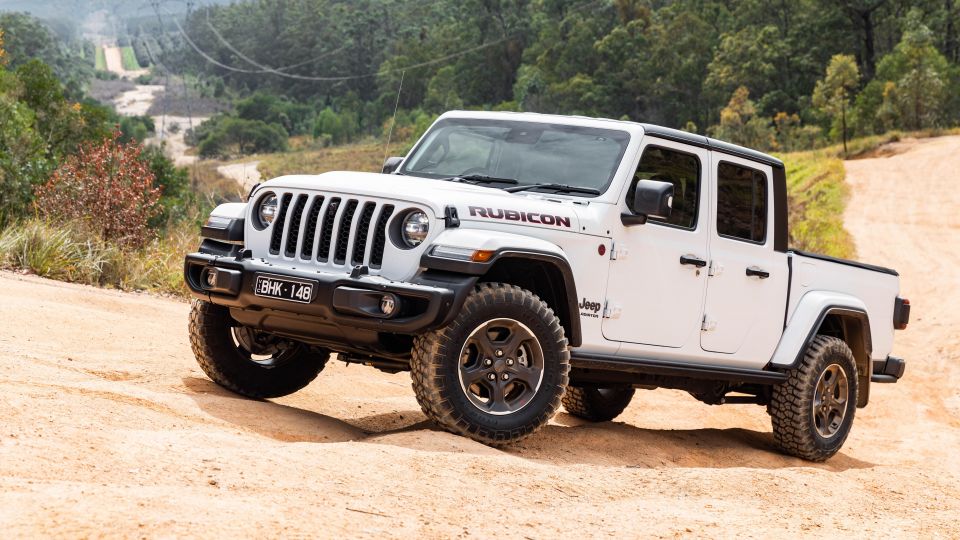
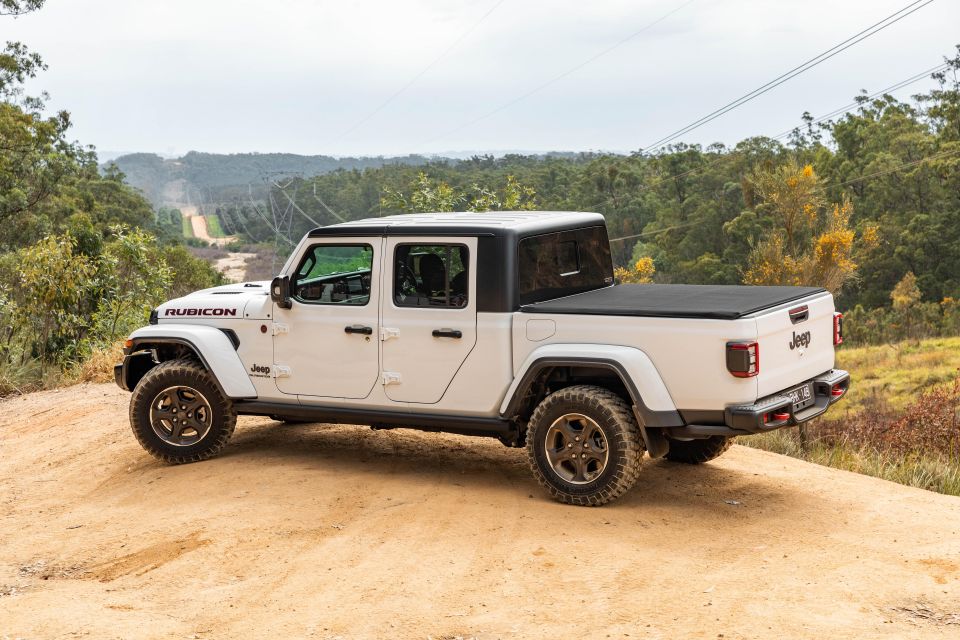

News Editor
New from
$65,450
excl. on-roads

News Editor
New from
$65,450
excl. on-roads


News Editor
New from
$65,450
excl. on-roads

News Editor
New from
$65,450
excl. on-roads
Quickly see how this car stacks up against its competition. Select any benchmark to see more details.
Where expert car reviews meet expert car buying – CarExpert gives you trusted advice, personalised service and real savings on your next new car.
After 28 years, Jeep re-entered the ute market in 2020 with the Gladiator.
Its last ute was the Comanche, not sold here, which was closely related to the XJ Cherokee. This time around, Jeep used the Wrangler as the starting point. Much as the Comanche looked like a Cherokee with a tray, the Gladiator looks like a Wrangler Unlimited with a tray.
After only a year on the Australian market, Jeep announced it had boosted the Gladiator’s payload by 166kg to 693kg, and reshuffled the line-up.
The base Sport S was dropped after just four months on sale, with it and the Overland making way for a new Night Eagle entry variant.

The range-topping Rubicon, the most rugged of all the Gladiators, was also updated. The contents of the old Rubicon Luxury Package were made standard, while the price was increased by just $500.
There was a time where spending over $70,000 on a ute was unorthodox, but established names like the Ford Ranger, Isuzu D-Max and Toyota HiLux are available in ever-pricier guises, while there’s also the Chevrolet Silverado and Ram 1500 if you want something larger.
With its rugged, Wrangler-derived underpinnings and styling, the Rubicon could well be the only choice on some buyers’ shortlists: the Jeep they just have to have. But to those who are open to other possibilities, there’s the Ford Ranger Raptor X, while other off-road focused dual-cabs include the Nissan Navara PRO-4X Warrior.
If you’re already taken with the Gladiator’s styling and you’re an off-road buff, this range-topping Rubicon will surely be the one you’re after.
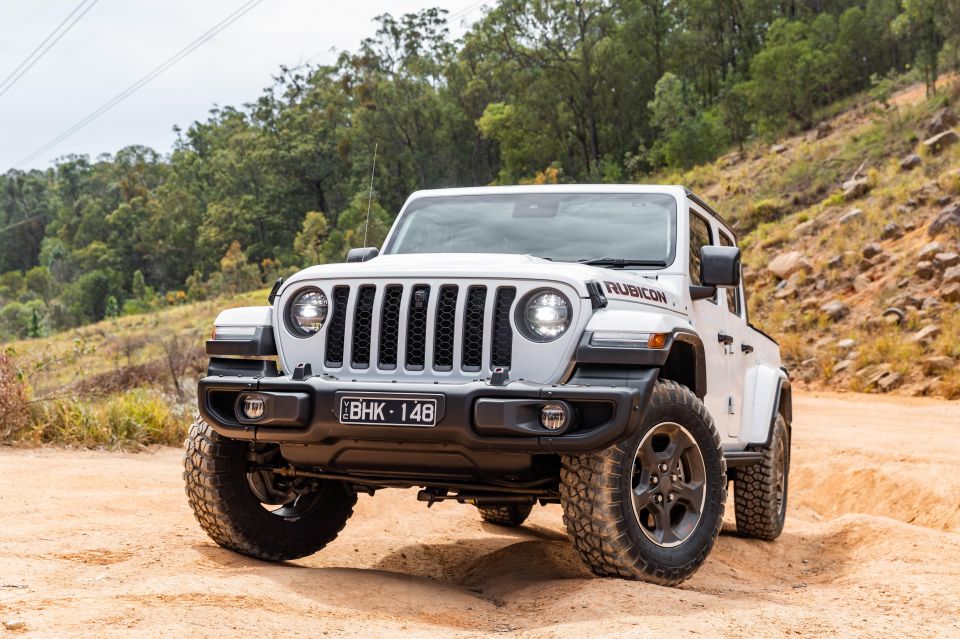
The 2022 Jeep Gladiator Rubicon starts at $76,950 before on-road costs, $8500 more than the base Night Eagle.
Ours included the $2950 Lifestyle Adventure Package but you can also add premium paint for $795, 17-inch polished black alloy wheels and a steel front bumper for $2000, and a body-colour hardtop and fender flares for $2950.
That makes it pricey for a dual-cab ute, though all the established players have been pushing further upmarket.
Just look at the Ford Ranger Raptor X, priced at $79,390 before on-roads, the Nissan Navara PRO-4X Warrior auto at $69,990 list, or the upcoming Volkswagen Amarok W580X which could cost upwards of $80,000.
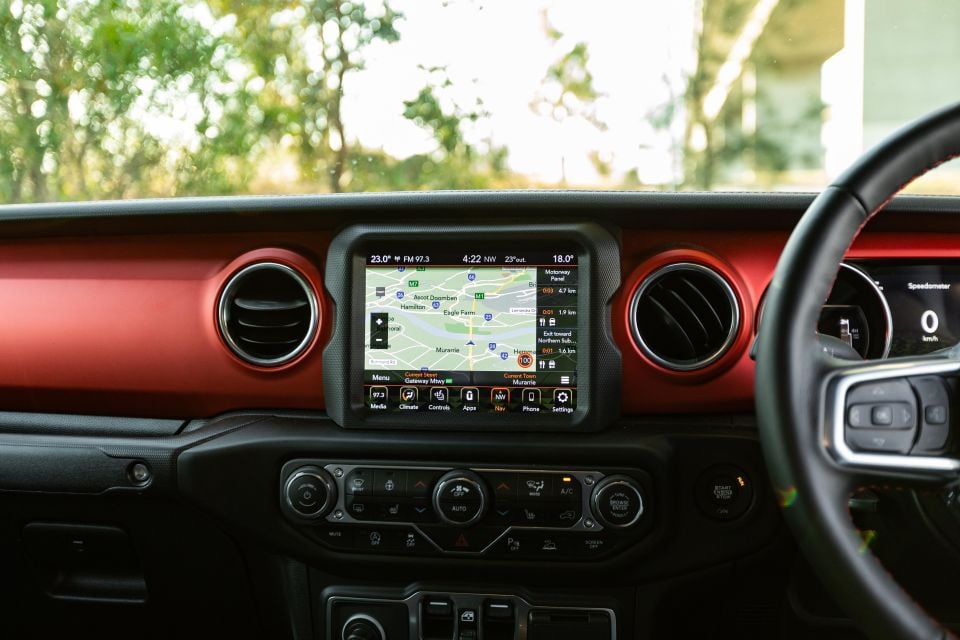
Buy your new car without the stress. It's fast, simple and completely free.

Great service from Travis and team, second time I have used this business would not hesitate to recommend them to anyone
Craig C.
Purchased a Ford Ranger in Sunshine Coast, QLD
CarExpert helped Craig save $7,224 on his Ford Ranger, now let us save you on your next new car.
Get your BEST pricePreviously, stepping up to the Rubicon from the defunct Overland meant you lost leather upholstery and heated front seats and steering wheel unless you added the Rubicon Luxury Package.
These features are now standard, along with a steel rear bumper, a removable, black hardtop, and a forward-facing trail camera.
Both the Night Eagle and Rubicon also include:
The optional Lifestyle and Adventure package, fitted to our tester, adds:
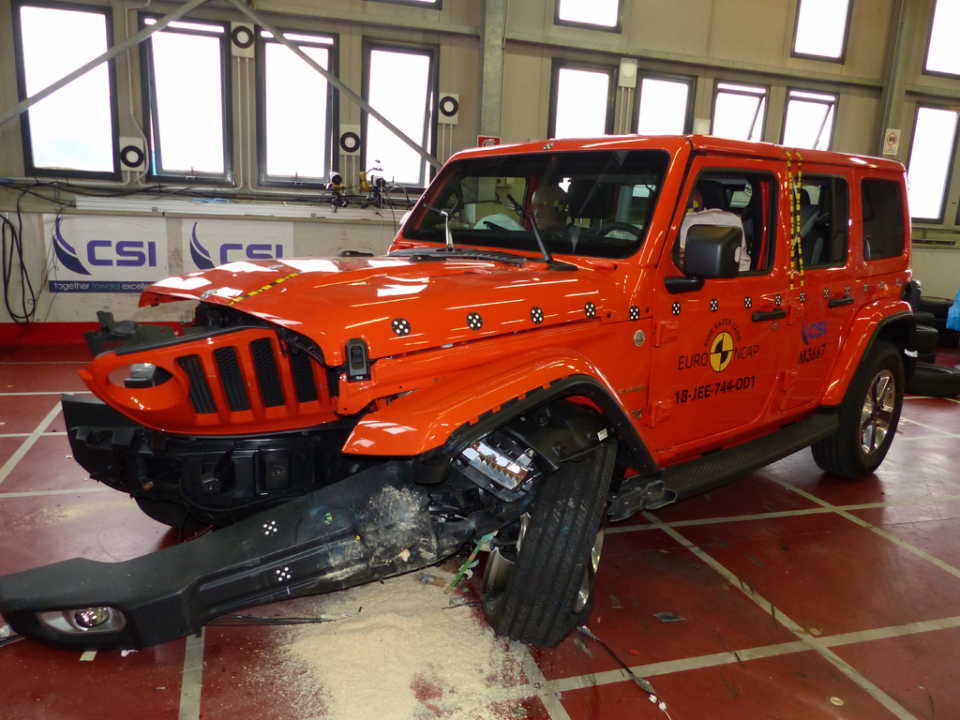
The Jeep Gladiator has a three-star rating from ANCAP with a 2019 date stamp. ANCAP gave the Gladiator the same rating and category scores as the Wrangler due to the two models’ close relation.
The Gladiator and Wrangler received an adult occupant protection score of 60 per cent, child occupant protection score of 80 per cent, vulnerable road user protection score of 49 per cent, and a safety assist score of 51 per cent.
All Gladiator models come standard with the following safety and driver assist features:
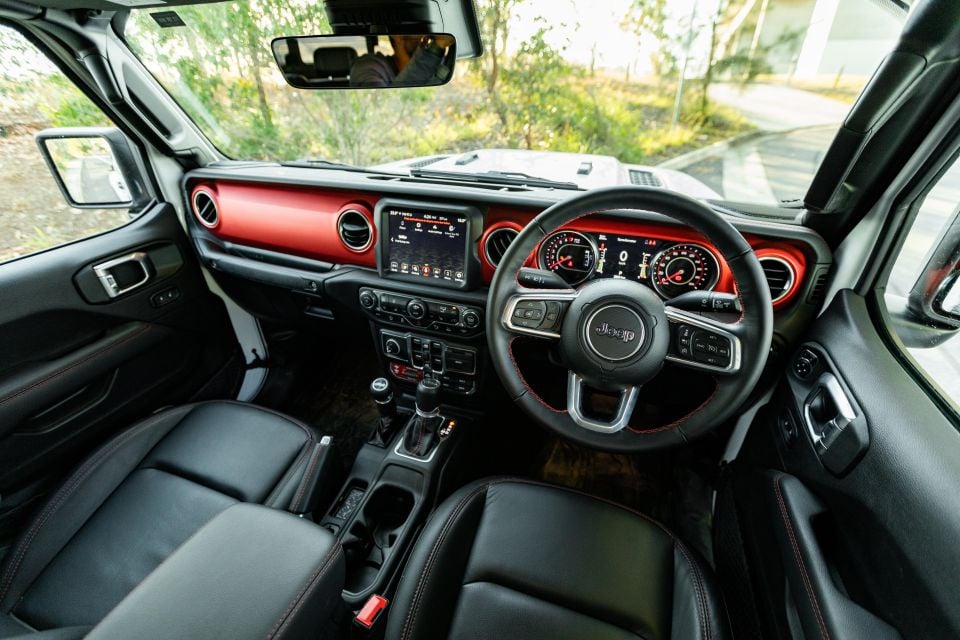
It’s a decent step up into the Gladiator’s cabin, though there’s a handy A-pillar-mounted grab handle to help you up.
Red stitching details abound, while red aluminium trim is used across the dashboard. This welcome splash of colour helps provide contrast in an otherwise black cabin.
The basic design looks much as Wrangler interiors have for many years now, with an upright, sheer dash that also houses the window switches.
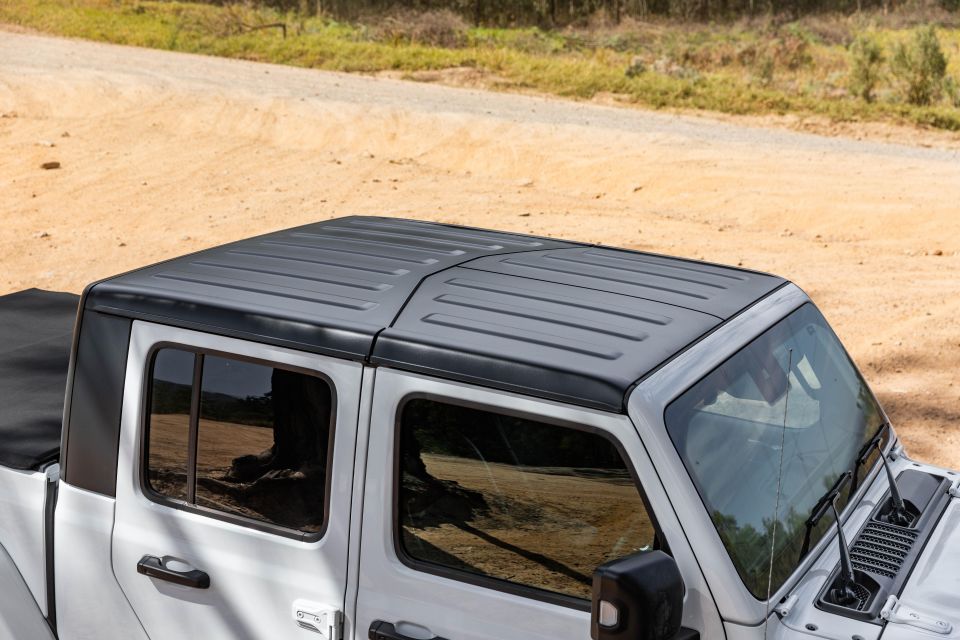
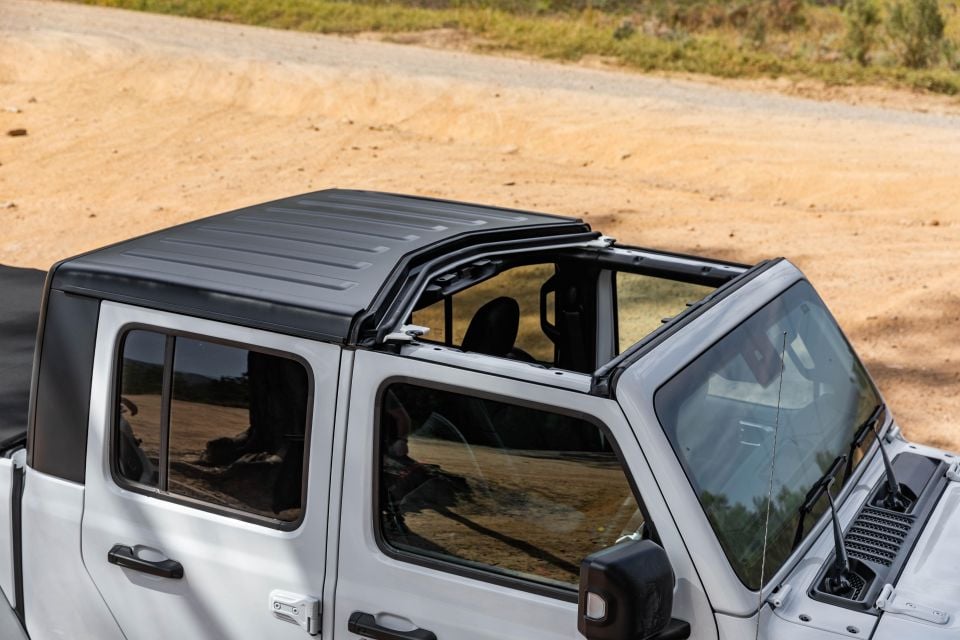
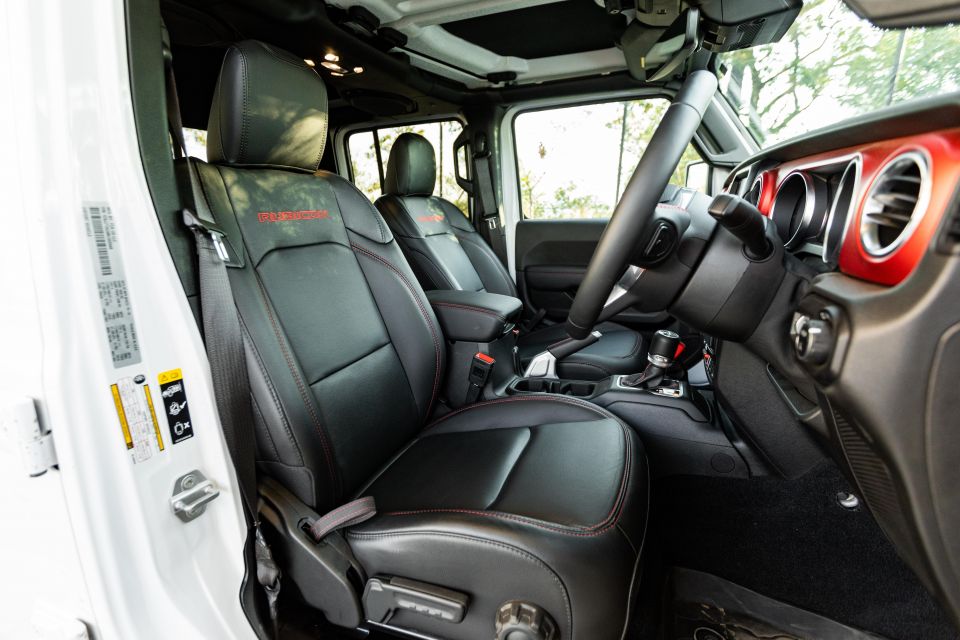
The doors, too, are fairly shapeless, with no storage beyond a net each – Jeep has likely kept these simple as they’re removable. That also explains why the window switches are on the dash instead of the doors.
You can remove the roof, which is a three-piece affair. The front two pieces in particular are easy to remove, and can be done so within seconds.
The material quality in the Gladiator is better than you might expect, if you haven’t been in a current-generation Wrangler already. The dashtop has neat stitching details, and soft-touch plastics are used for the tops of the doors front and rear.
Only one truly cheap element stands out, and it’s a criticism we’ve had of other Jeep products: the indicator and wiper stalks. They feel brittle when you use them, which is frustrating as they’re something you touch frequently.
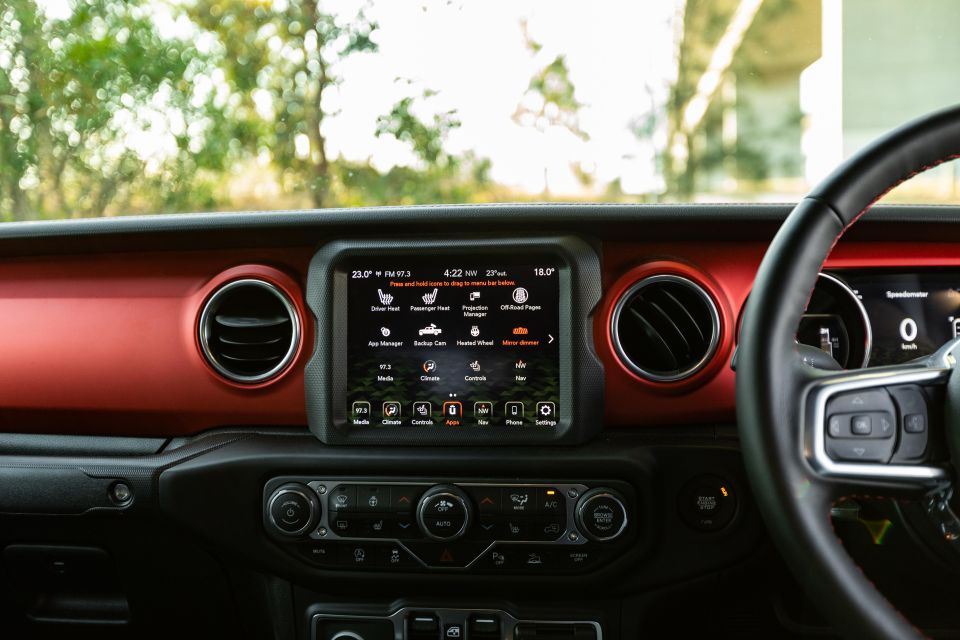
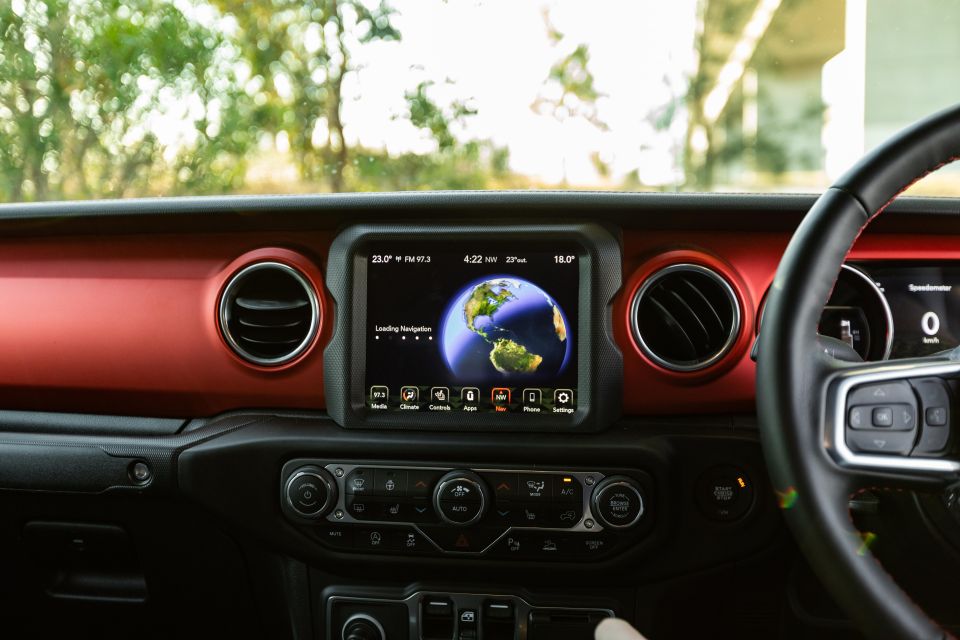
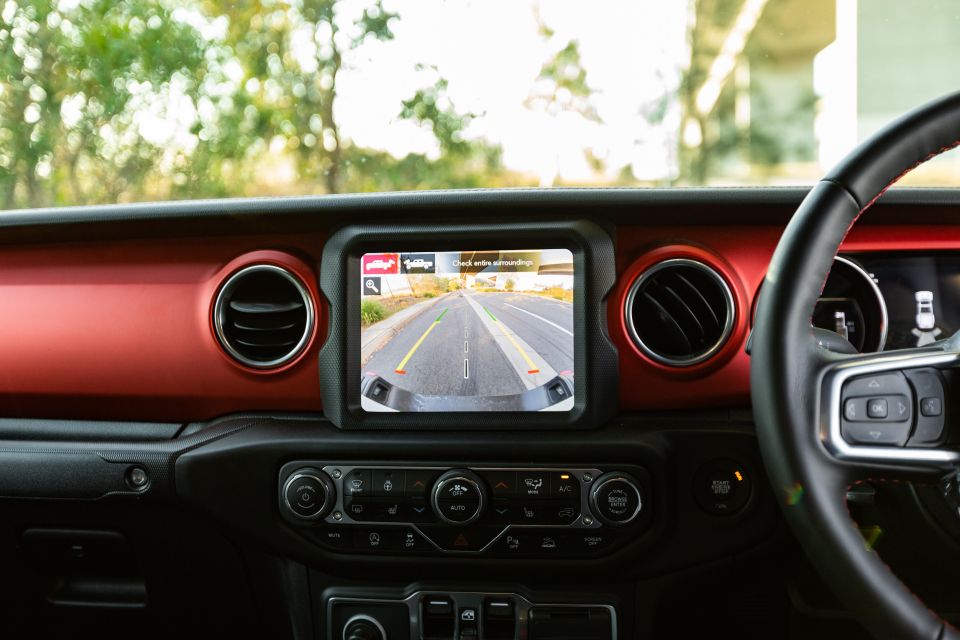
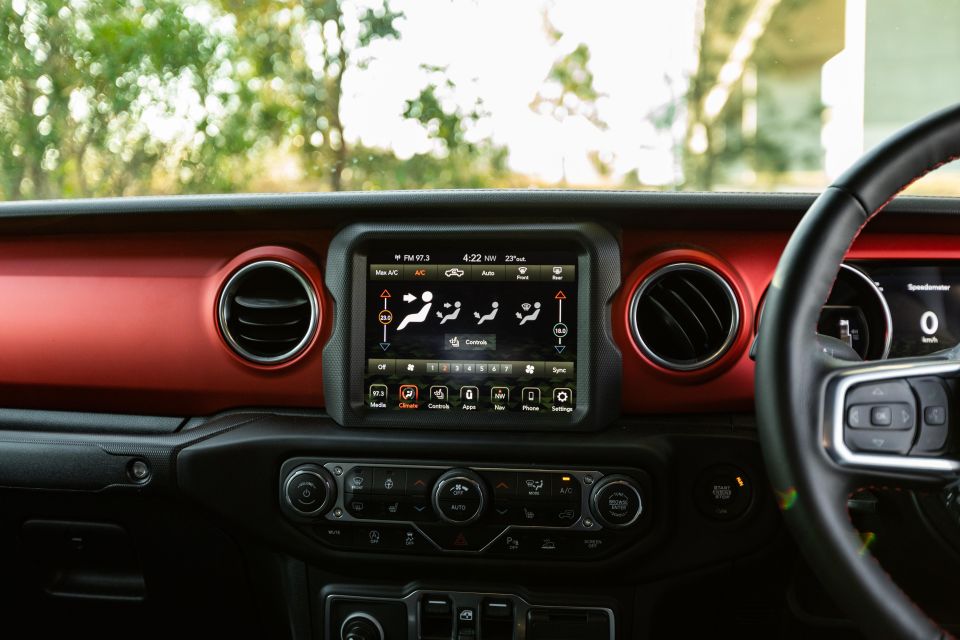
The indicator stalk is also on the “wrong” (left) side, though that’s something you’ll quickly get used to. What never ceases being bothersome is the lack of a footrest in the driver’s footwell.
The infotainment is running on the Uconnect 4 operating system instead of the flashier Uconnect 5 found in the updated Compass.
Nevertheless, it still impresses with its logical layout, touchscreen responsiveness, attractive graphics, and clever details like how it displays the suburb you’re currently in at the bottom of the map view.
Instead of restricting climate setting adjustment to the touchscreen as some brands have started doing, Jeep allows you to adjust the temperature and fan speed through both a set of neat physical controls and the touchscreen.
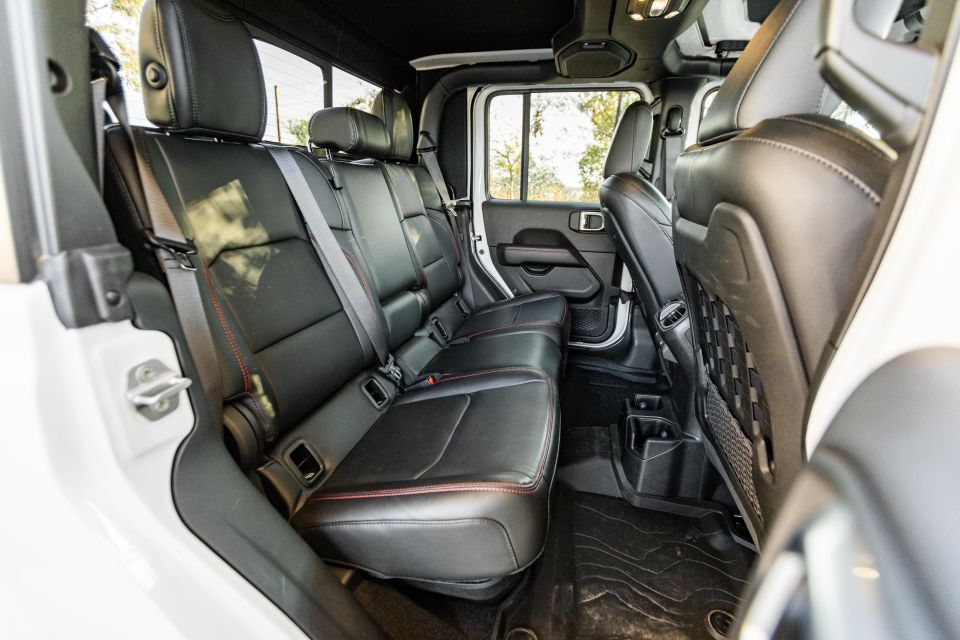
Step into the back and there’s ample headroom, legroom and knee room. I could sit behind my 180cm self with room to spare.
There’s a fold-down centre armrest with two cup holders that seem a bit on the small side for an American vehicle, though there are two cup holders located awkwardly on the floor in front of the centre seat.
There are ISOFIX child seat anchor points on each outboard rear seat, plus top-tether points for each seat. You can flip up the rear bench to reveal a lockable storage space.
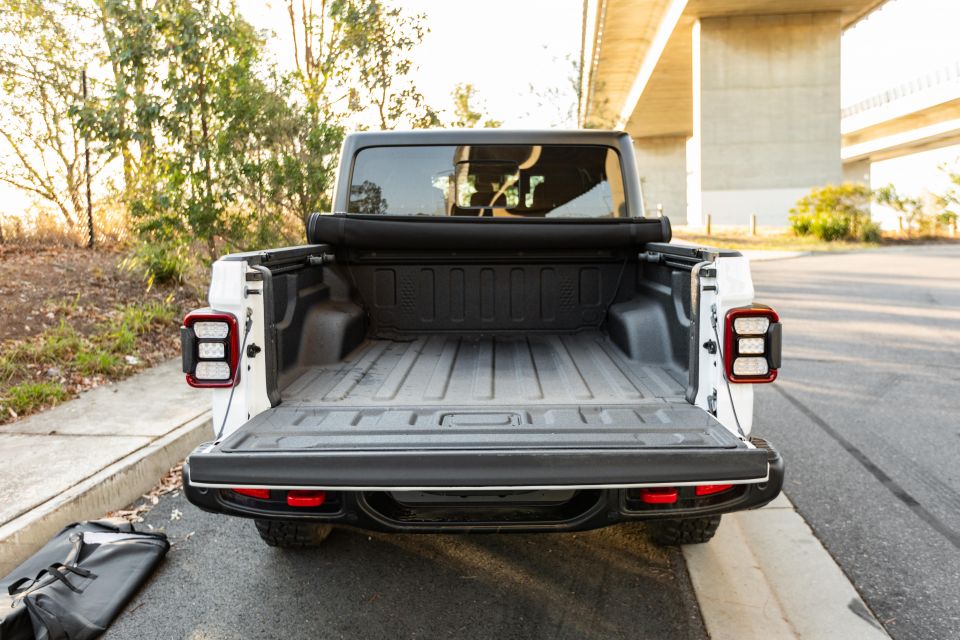
The tray measures 1531mm long and 1137mm wide between the wheel arches. While the latter figure is lineball with a Ranger, the Gladiator’s tray length comes up short against the Ranger by 18mm.
Likewise, while payload has been increased to 693kg, it’s still lower than the Ranger Raptor X (748kg).
Gross vehicle mass is 2935kg while braked towing capacity is 2721kg, again lower than the Ranger Raptor X (3500kg).
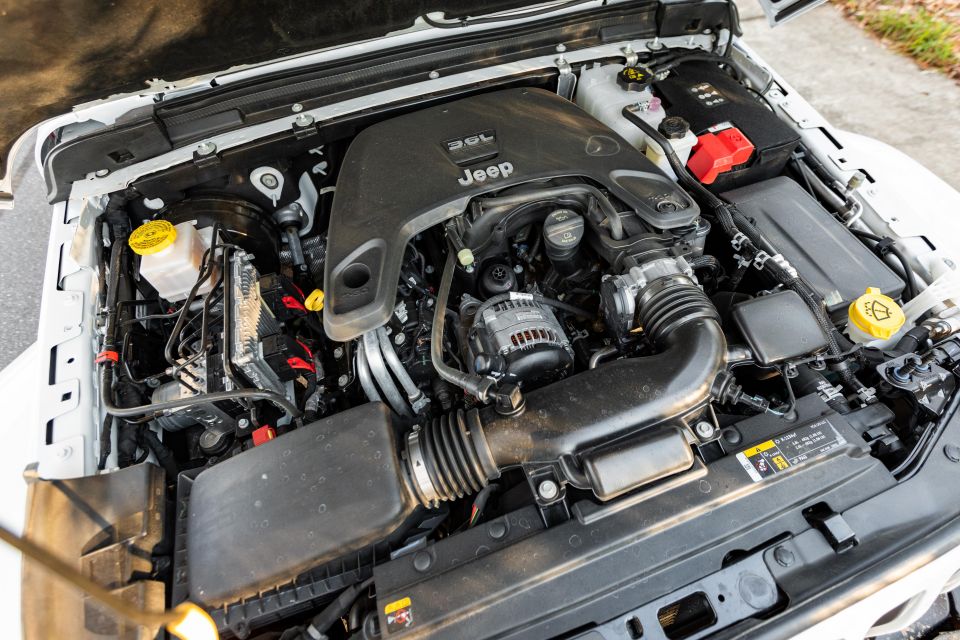
The Gladiator is powered by the ubiquitous ‘Pentastar’ naturally-aspirated 3.6-litre V6 found under the bonnets of numerous Chrysler, Dodge, Jeep and Ram products. It produces 209kW of power at 6400rpm and 347Nm of torque at 4100rpm.
It’s mated to an eight-speed torque-converter automatic transmission and Jeep’s Rock-Trac four-wheel drive system, with selectable low range gearing.
As the most rugged member of the Gladiator range, it features a raft of off-road improvements over the Night Eagle. These include Tru-Lok locking front and rear differentials, an electronic front sway bar disconnect, and Fox Performance shocks. The low-range ratio is also changed from 2.71:1 to 4.0:1.
Features common across both variants include Dana M210 front and M220 rear axles, a rear stabiliser bar and skid plates for the fuel tank, transfer case and transmission.
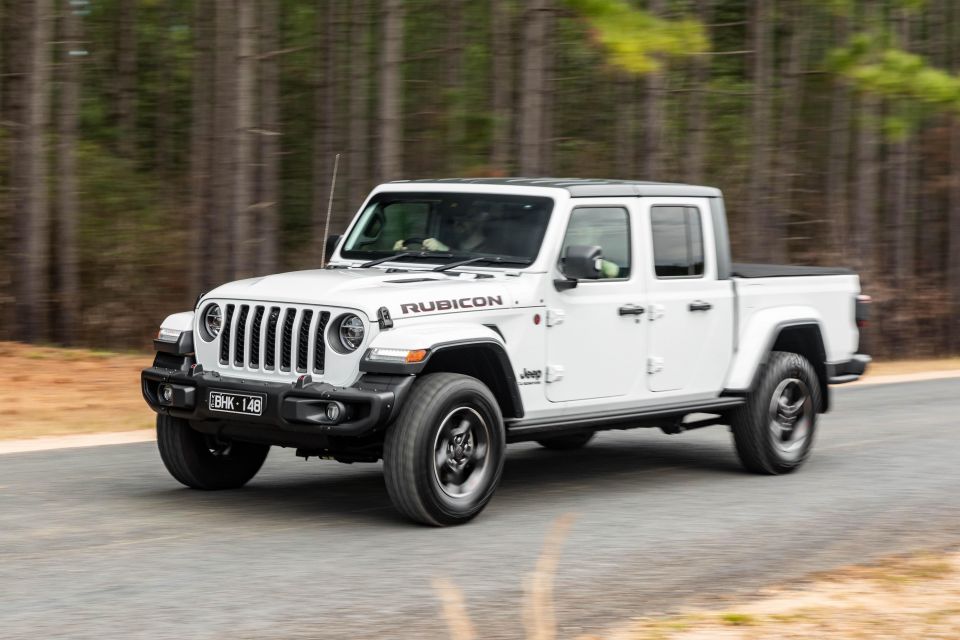
You can tell this is an off-road capable vehicle by the way it drives on the road.
The knobbly off-road tyres make their texture keenly felt on even the smoothest of roads, while they make a racket on the highway.
You might think the brick-like aerodynamics of the Gladiator would result in a lot of wind noise on the highway, while its rugged design would mean a surplus of engine noise.
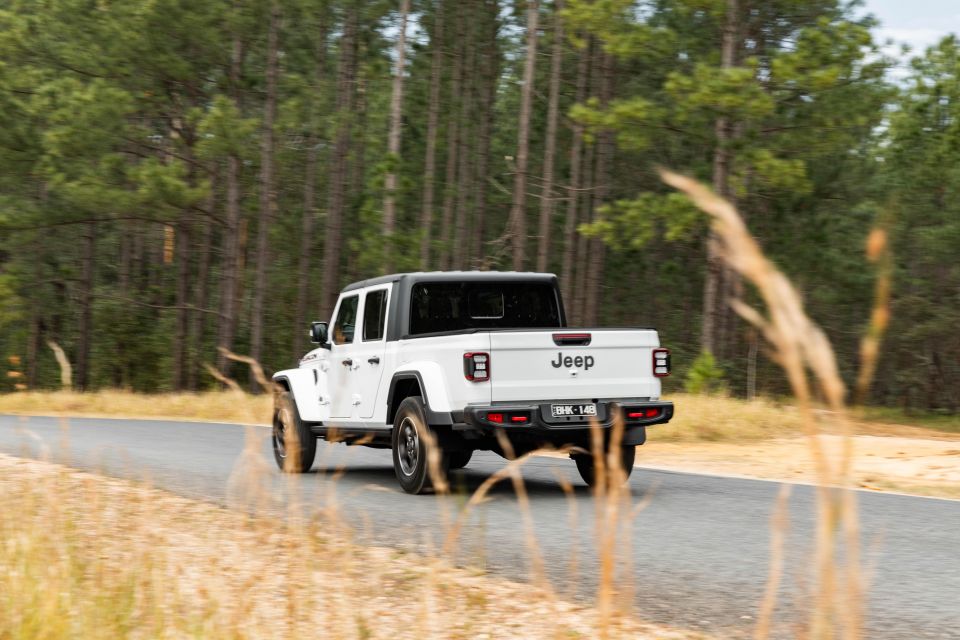
However, it’s the tyres that make the most noise, producing a whiny, ghostly sound like you’re driving alongside a semi-trailer.
Tyres aside, ride quality is quite decent for something with live axles front and rear. The Rubicon has a smooth ride over most surfaces, lacking the jitteriness you might expect, though it can feel a touch floaty.
As you would expect, the Gladiator isn’t designed for corners. It feels just as top-heavy and ponderous as a Wrangler, perhaps more so.
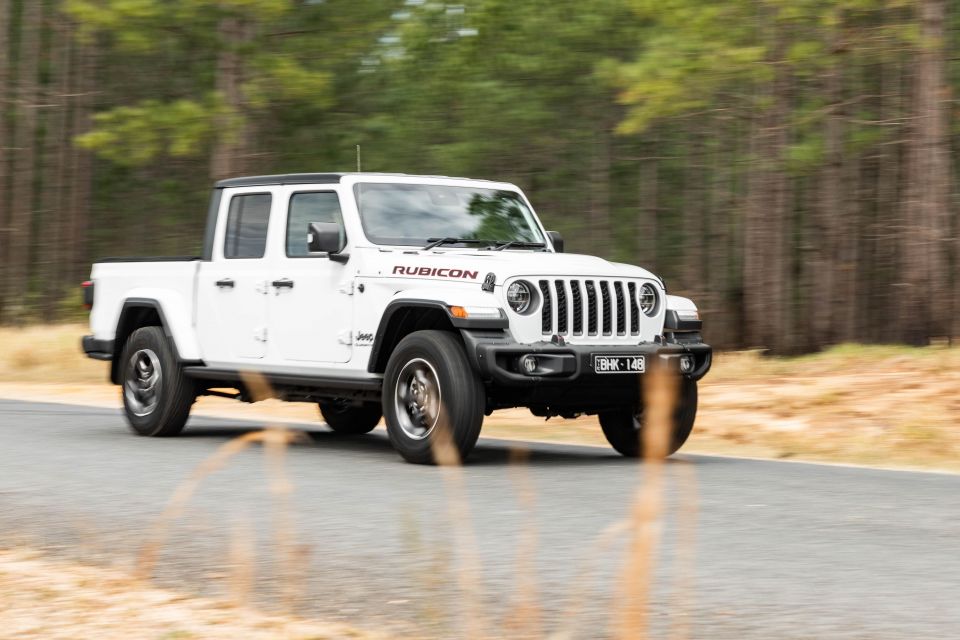
Where expert car reviews meet expert car buying – CarExpert gives you trusted advice, personalised service and real savings on your next new car.
The steering is overly light and vague, further diminishing confidence. At least that makes this lengthy beast easier to park, though a surround-view camera would be a welcome addition for something this long – measuring 5591mm long, the Gladiator is 198mm longer than a Ranger Raptor X.
The petrol V6 engine is adequate in this application, but no more. The Pentastar V6 is a solid mill but it has to haul around 2195kg (tare) of Gladiator, which means a prod with the right foot will produce a surfeit of noise but not a massive amount of forward momentum.
The superior low-end torque of a diesel would be preferable to a higher-revving petrol V6, but sadly the 3.0-litre turbo-diesel V6 remains off-limits to Australia.
It’s a pity, as that would give the Gladiator a fairly unique selling point given only the Amarok offers a V6 diesel and the Ram 1500 and Chevrolet Silverado 1500 are petrol V8-only in Australia.
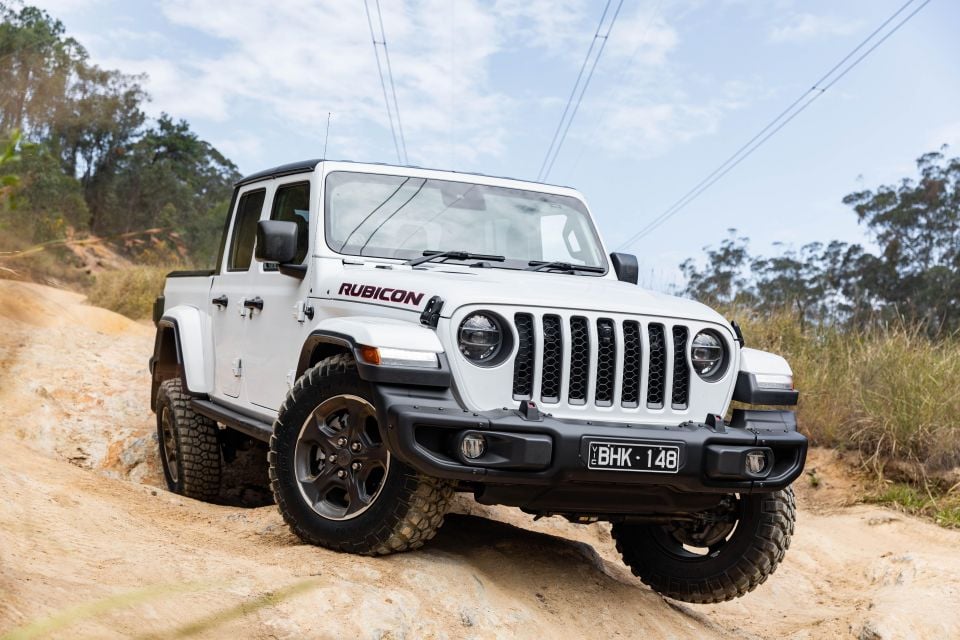
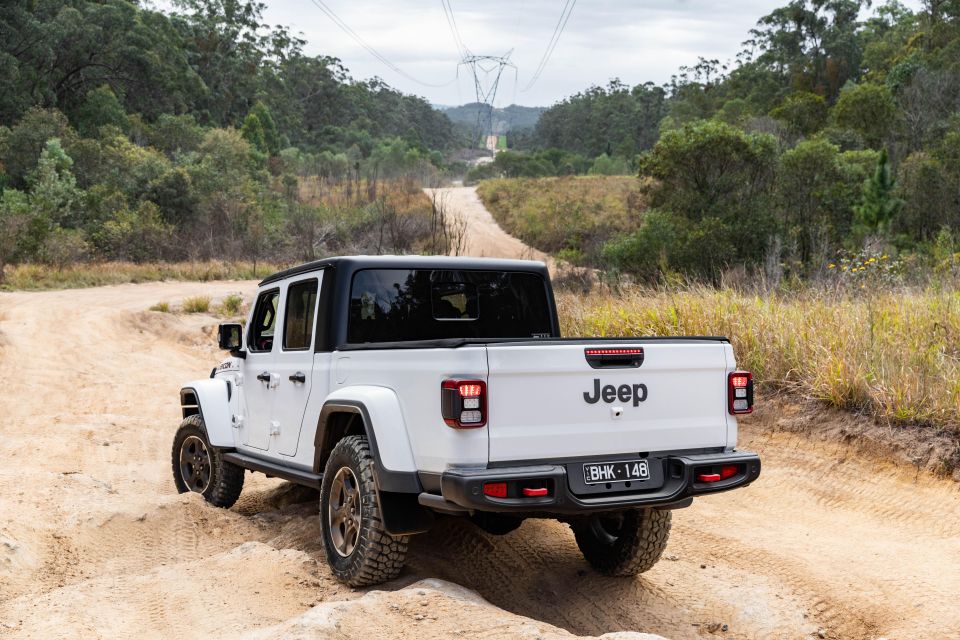
I’m no Simon Christie – you can read his Gladiator off-road review here – but I did take the opportunity to tackle some trails with a few off-road enthusiasts.
While many off-roaders these days have a simple dial to change between low- and high-range gearing, the Gladiator maintains a second shifter for an old-school touch. Choose between 2H, 4H Auto, 4H Part Time, N and 4L. The 4H Auto mode is a relative rarity in this segment, and can be used on bitumen.
The Gladiator doesn’t feel quite as all-conquering as a Wrangler shorty, with that longer wheelbase meaning its breakover angle is 18.4 degrees. That compares to 26.6 degrees for the two-door Wrangler, and up to 21.2 degrees for the Wrangler Unlimited.
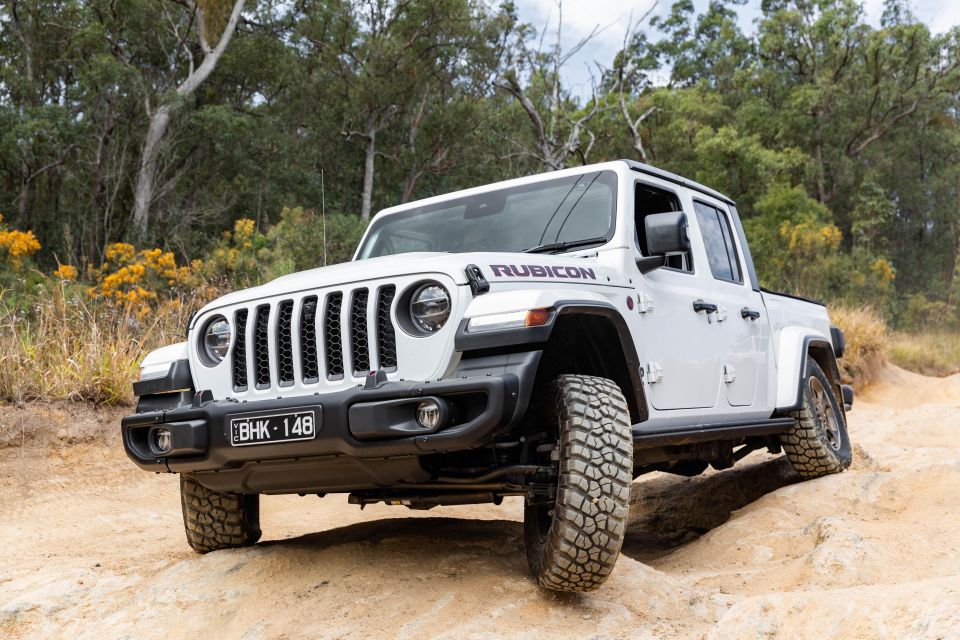
It means the Gladiator feels more prone to bottoming out, though even on tougher trails we never once got stuck. It’s worth noting the Gladiator doesn’t have as much ground clearance as a Ranger Raptor X, with 249mm against 283mm for the Ford.
There’s even a “trail camera” at the front with an integrated washer, which is a useful feature, while the Off-Road Pages screen on the touchscreen gives you off-road information on the fly like steering angle, pitch and roll.
If you’re willing to take your $80,000 ute off-road, you’ll get pretty far. Like the Wrangler, there’s also a whole world of aftermarket modifications available to you should you want to enhance its capability further.
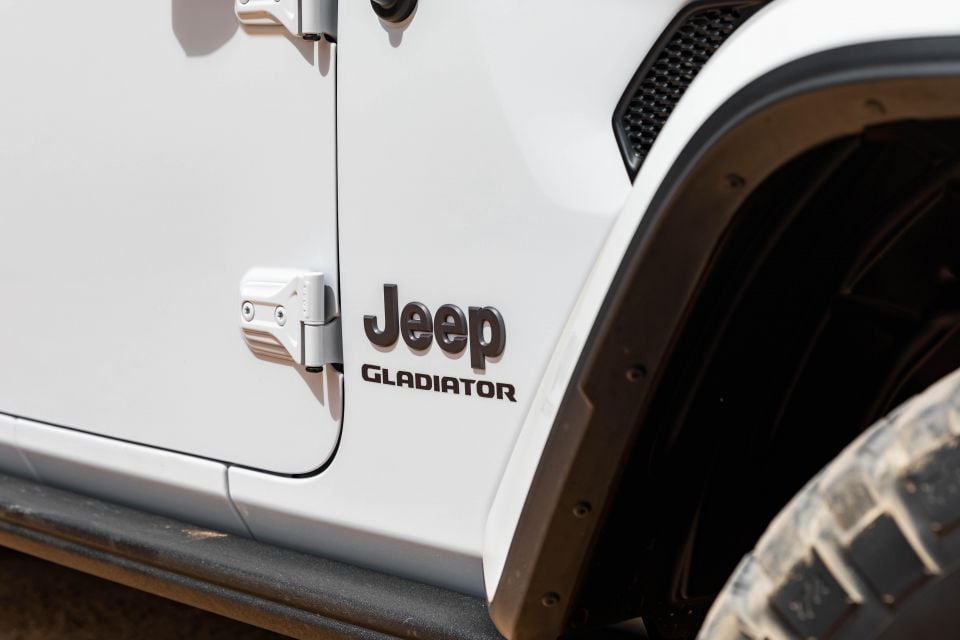
The official combined fuel economy rating is 12.4L/100km. It runs on 91 RON regular unleaded and has a 83L fuel tank.
In our test loop, consisting of inner-city, suburban and highway driving, we averaged 14L/100km.
The Gladiator requires servicing every 12 months or 12,000km, whichever comes first.

In addition to a five-year, 100,000km warranty, Jeep offers five years of capped-price servicing. Each service costs $399, for a total of $1995 over five years. That compares to $1586 for a Ranger Raptor X, which has longer 15,000km intervals.
A Navara PRO-4X Warrior has longer intervals still at 12 months or 20,000km, and costs $2847 to service over five years.
While service pricing is fairly competitive for the segment, the Gladiator’s five-year, 100,000km warranty comes up short when most rivals offer five years and unlimited kilometres.
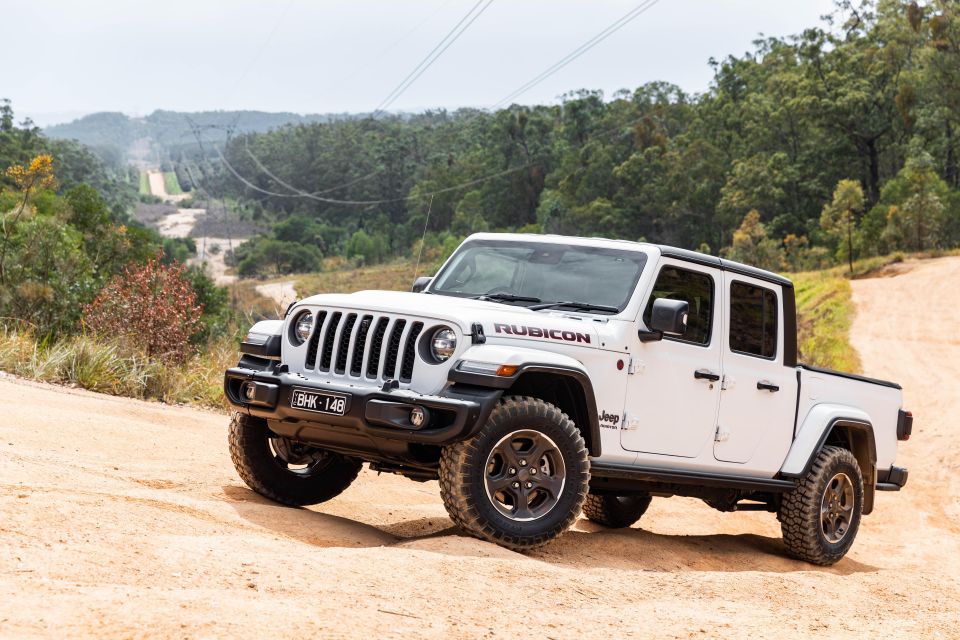
Buy your new car without the stress. It's fast, simple and completely free.

Great service from Travis and team, second time I have used this business would not hesitate to recommend them to anyone
Craig C.
Purchased a Ford Ranger in Sunshine Coast, QLD
CarExpert helped Craig save $7,224 on his Ford Ranger, now let us save you on your next new car.
Get your BEST priceIf you want a ute that can haul the biggest load or achieve the best fuel economy, the Gladiator Rubicon simply isn’t it. It’s not the most rational dual-cab ute purchase, not by a long shot, but that isn’t the point.
This is aimed right at buyers who want a Wrangler with a tray. Which makes sense, as this is more or less a Wrangler with a tray. That means it has Wrangler styling and most of its off-road ability and, like the Wrangler, it has plenty of aftermarket off-road modifications available.
If you’ll primarily be driving on bitumen, the Gladiator Rubicon’s noisy off-road tyres, awkward dynamics, and vague steering will frustrate.
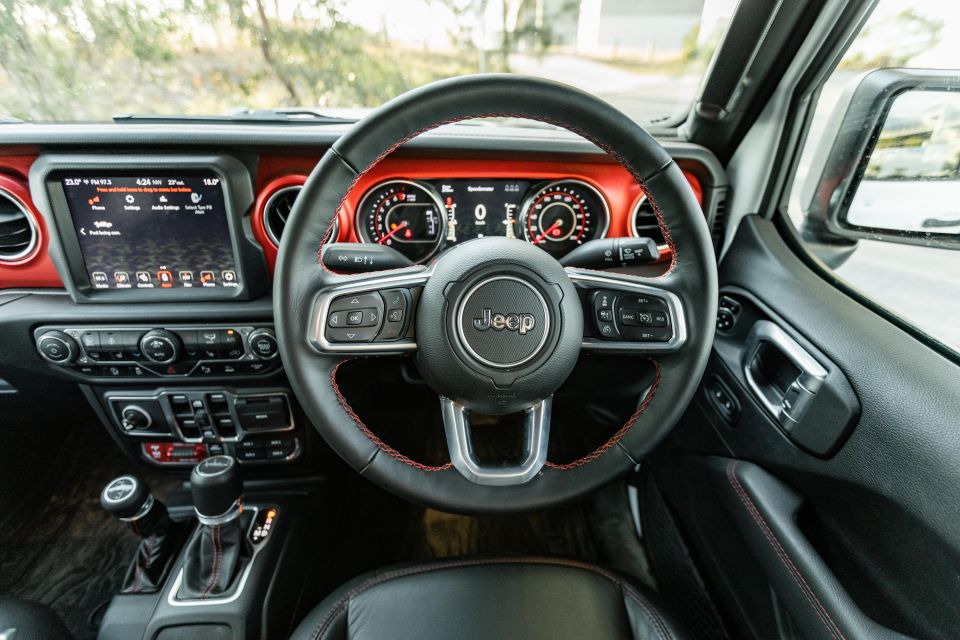
The Gladiator is also let down by its lack of a diesel option. Oh, how we wish that diesel V6 available overseas would come here.
In the plus column, there’s a long feature list, a genuinely nice interior, and plenty of off-road ability. You can also remove the roof and doors, something you can’t do with a Ranger or Navara without a saw and a lot of regret.
This is an eminently distinctive and talented ute. Just know that it isn’t the most sensible.
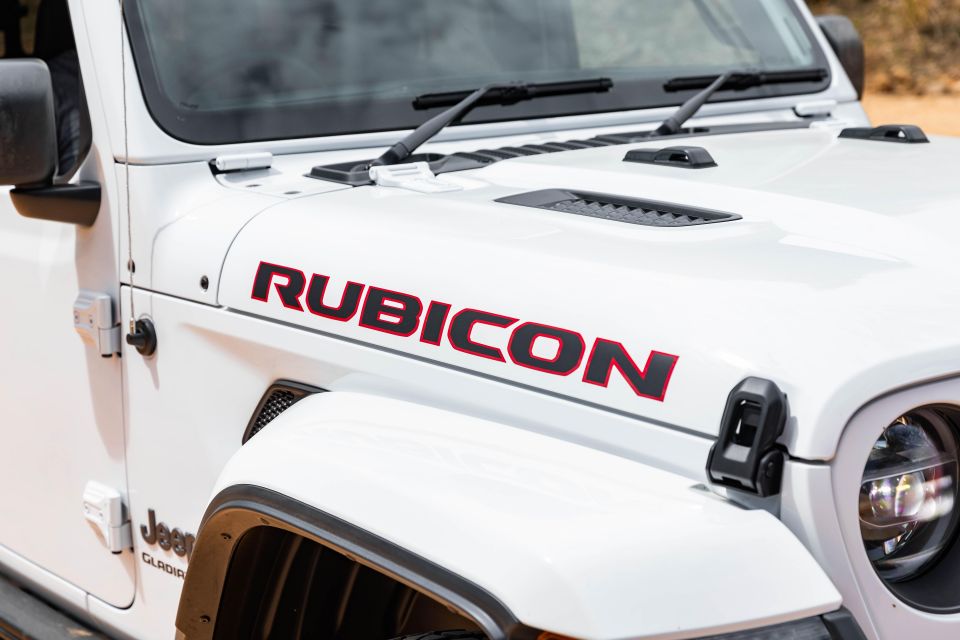
Click the images for the full gallery
Where expert car reviews meet expert car buying – CarExpert gives you trusted advice, personalised service and real savings on your next new car.
William Stopford is an automotive journalist based in Brisbane, Australia. William is a Business/Journalism graduate from the Queensland University of Technology who loves to travel, briefly lived in the US, and has a particular interest in the American car industry.


Max Davies
6 Days Ago
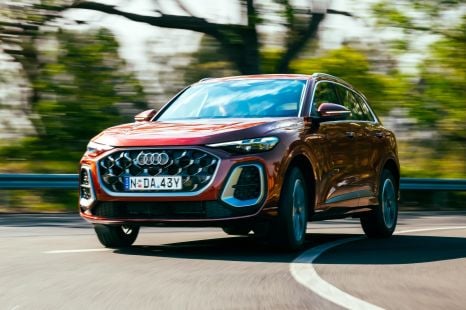

James Wong
4 Days Ago


James Wong
4 Days Ago
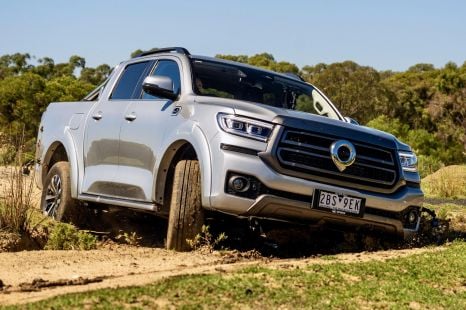

Max Davies
3 Days Ago
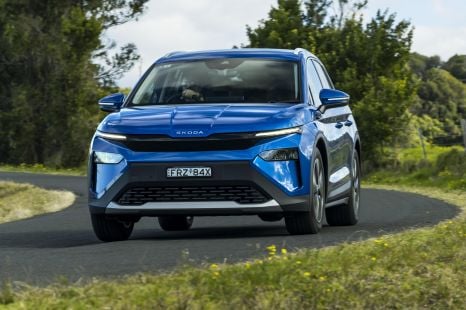

Josh Nevett
1 Day Ago
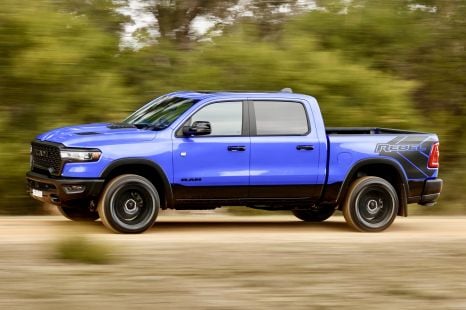

Max Davies
1 Day Ago